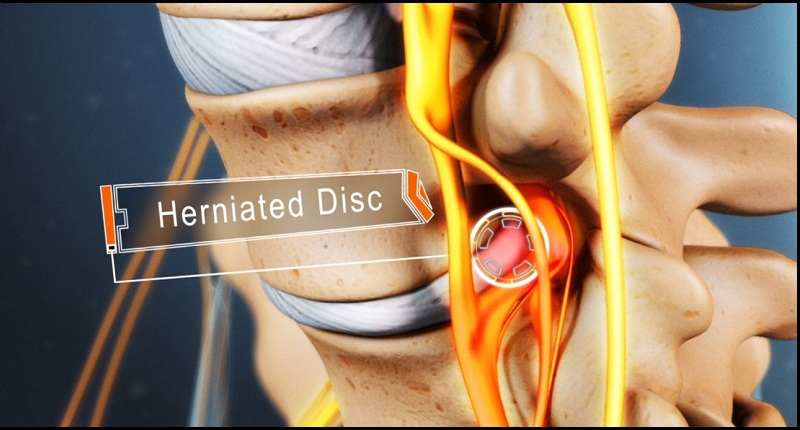What is a slipped disk?
- A slipped disk occurs when the soft inner portion of the disk protrudes through the outer ring.
- Symptoms vary based on where the slipped disk occurs and if it compresses any of your spinal nerves.
- Slipped disks are more common in older adults.
Your spinal column is made up of a series of bones (vertebrae) stacked onto each other. From top to bottom, the column includes seven bones in the cervical spine, 12 in the thoracic spine, and five in the lumbar spine, followed by the sacrum and the coccyx at the base. These bones are cushioned by disks. The disks protect the bones by absorbing the shocks from daily activities like walking, lifting, and twisting.
Each disk has two parts: a soft, gelatinous inner portion and a tough outer ring. Injury or weakness can cause the inner portion of the disk to protrude through the outer ring. This is known as a slipped, herniated, or prolapsed disk. This causes pain and discomfort. If the slipped disk compresses one of your spinal nerves, you may also experience numbness and pain along the affected nerve. In severe instances, you may require surgery to remove or repair the slipped disk.
What are the symptoms of a slipped disk?
You can have a slipped disk in any part of your spine, from your neck to your lower back. The lower back is one of the more common areas for slipped disks. Your spinal column is an intricate network of nerves and blood vessels. A slipped disk can place extra pressure on the nerves and muscles around it.
Symptoms of a slipped disk include:
- Pain and numbness, most commonly on one side of the body.
- Pain that extends to your arms or legs.
- Pain that worsens at night or with certain movements.
- Pain that worsens after standing or sitting.
- Pain when walking short distances.
- Unexplained muscle weakness.
Tingling, aching, or burning sensations in the affected area.
What causes slipped disks?
A slipped disk occurs when the outer ring becomes weak or torn and allows the inner portion to slip out. This can happen with age. Certain motions may also cause a slipped disk. A disk can slip out of place while you are twisting or turning to lift an object. Lifting a very large, heavy object can place great strain on the lower back, resulting in a slipped disk. If you have a very physically demanding job that requires a lot of lifting, you may be at increased risk for slipped disks.
Overweight individuals are also at increased risk for a slipped disk because their disks must support the additional weight. Weak muscles and a sedentary lifestyle may also contribute to the development of a slipped disk.
As you get older, you are more likely to experience a slipped disk. This is because your disks begin to lose some of their protective water content as you age. As a result, they can slip more easily out of place. They are more common in men than women.
Is it possible to prevent a slipped disk?
It may not be possible to prevent a slipped disk, but you can take steps to reduce your risk of developing a slipped disk. These steps include:
- Use safe lifting techniques: Bend and lift from your knees, not your waist.
- Maintain a healthy weight.
- Do not remain seated for long periods; get up and stretch periodically.
- Do exercises to strengthen the muscles in your back, legs, and abdomen.
